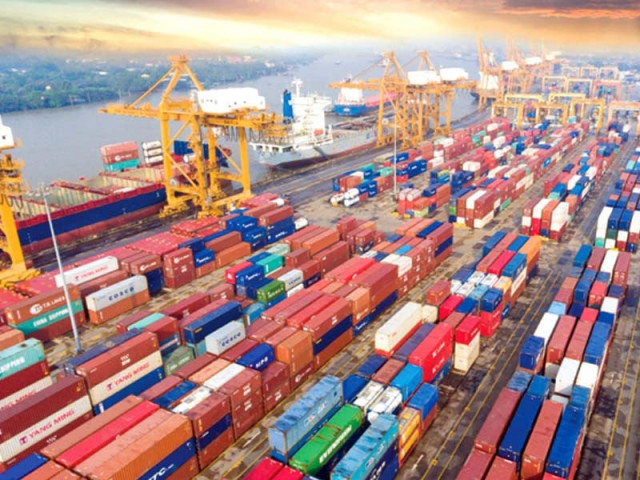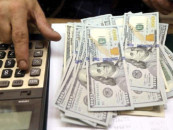External vulnerability takes economy back to stabilisation
Ballooning trade deficit, depleting forex reserves force govt to resort to expensive borrowing

Gone are the days when trade balance ended in surplus in Pakistan. From July to December 2021, the trade deficit crossed $21 billion.
Although the growth in merchandise exports was 29%, the import growth of around 57% aggravated the trade deficit.
Despite 11.2% growth in remittances, the current account deficit (CAD) turned out to be 5.7% of gross domestic product (GDP). Consequently, Pakistan became a net borrower of around $9 billion from the rest of the world.
Keeping in view the above statistics, the proponents would argue that the economy has been passing through a pandemic phase and did recover and perform very well despite all odds.
They will further state that exports are growing at a rapid pace by quoting the absolute numbers.
In addition, all growing economies require imports and Pakistan is not an exception. Then comes tax collection which is hitting the target with every passing month.
Furthermore, high global crude and commodity prices translate into a high inflation rate in the country and a mechanism is in place which will bring a deceleration in the accelerated prices in the coming months.
Prudent steps of the government are also vital as far as exchange rate is concerned, which have played a pivotal role in achieving competitiveness of exports and have arrested the decline of the rupee.
They are of the opinion that rupee devaluation will yield results with the passage of time and it will promote export-led growth.
On the contrary, the critics would argue that the economy is growing at the cost of external vulnerability.
Although exports have increased, the import content of exports is high, which means that exports are import dependent to a great deal. In addition, the spurt in imports reflects structural weakness of the economy.
They also attribute the current growth in tax collection to higher imports. They will further state that structural bottlenecks are fueling inflation in the country and the economic situation will deteriorate due to demand compression.
Furthermore, the devaluation of the rupee will not increase exports owing to structural constraints in the economy. Hence, the impact of devaluation will be neutralised in the medium term.
Despite 41% devaluation of the rupee, the exports are unable to finance imports. Thus, both import substitution and export promotion are necessary for economic development.
Industrial growth recovered in FY21 and almost reached the pre-Covid level owing to the Temporary Economic Refinance Facility (TERF). However, the industrial growth started to decelerate in FY22, as depicted by the large-scale manufacturing (LSM) index.
From July to November 2021, the LSM sector grew 3.2%. Analysts think that the rise in policy rate and the discontinuation of TERF facility have contributed to the slowdown in manufacturing activity.
In addition, the rupee devaluation and stagnant agricultural growth acted as the binding constraints.
The agriculture sector is facing acute challenges in FY22. Agricultural inputs which include urea, di-ammonium phosphate, pesticides and insecticides have become dearer.
Add to these is the higher electricity tariff. These expensive inputs have translated into food inflation, which has been hovering in double digits over the last couple of years.
Furthermore, the government is bound to import agricultural commodities owing to their shortage. All these factors have contributed to food inflation.
The accelerated food prices are playing a major role in dampening the industrial activity.
In short, the ballooning trade deficit and depleting foreign exchange reserves have forced the government to resort to expensive commercial borrowing in the form of Eurobond and Sukuk, which are offered at higher dollar-denominated rates of return.
The emerging external vulnerability takes the economy back to stabilisation. Let us hope for the best and prepare for the worst.
The writer is the Assistant Professor of Economics at SDSB, Lahore University of Management Sciences (LUMS)
Published in The Express Tribune, January 31st, 2022.
Like Business on Facebook, follow @TribuneBiz on Twitter to stay informed and join in the conversation.



















COMMENTS
Comments are moderated and generally will be posted if they are on-topic and not abusive.
For more information, please see our Comments FAQ